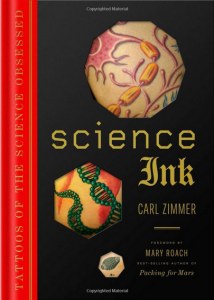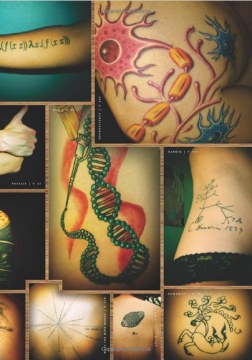 Three sci-tech books books landed on my desk just in time for a short seasonal review: 9 Algorithms that Changed the Future, The Twitter Book and Science Ink.
Three sci-tech books books landed on my desk just in time for a short seasonal review: 9 Algorithms that Changed the Future, The Twitter Book and Science Ink.
In “9 algorithms”, Computer Scientist John MacCormick discusses the ingenious ideas that drive today’s computers pointing out how a simple web search plucks needles from virtual haystacks while uploading a photo to Facebook involves millions of pieces of information being transmitted and received over myriad error-prone network connections. The algorithms that make such things and many others, including data compression, encryption, error correction, and pattern recognition seem simple from the user perspective are laid bare by MacCormick in an engaging and jargon-reduced manner.
The second edition of Tim O’Reilly and Sarah Milstein’s tweety classic – The Twitter Book – brings us up to date with getting the most out of twitter. As up to date as any printed document can be with respect to an online activity, that is. They explain how to use the micro-blogging platform to connect with friends, family, colleagues, customers and even celebrities. They also teach you how to stand out on Twitter and how to avoid the common mistakes and pitfalls. Finally, the duo reveal how Twitter is more than what the majority of non-users imagine it to be, they explain how Twitter can become a critical communications channel that breaks the news, offers advice, answers questions and entertains.
 Finally, Science Ink is Carl Zimmer’s latest book and builds on his well-known accidental hobby of collecting scientific tattoos. The lavish hardback reveals the DNA dudes and the chemistry chicks who have adorned themselves with sub-dermal inky residues as a badge of geeky honour. Almost every part of the body has been stamped or marked tribally in almost every area of science: astronomy, biology, chemistry, earth sciences, mathematics, neuroscience, palaeontology, physics and more. Some are exquisite, some not so much. Discover the very personal stories about these scientific tattoos (if you want the science itself you’ll have to look elsewhere). Almost all the tattoos are inspirational in some way, but, at the same, I’m afraid you won’t see me in a tattoo parlour getting the sciencebase crown ether logo needled into my biceps.
Finally, Science Ink is Carl Zimmer’s latest book and builds on his well-known accidental hobby of collecting scientific tattoos. The lavish hardback reveals the DNA dudes and the chemistry chicks who have adorned themselves with sub-dermal inky residues as a badge of geeky honour. Almost every part of the body has been stamped or marked tribally in almost every area of science: astronomy, biology, chemistry, earth sciences, mathematics, neuroscience, palaeontology, physics and more. Some are exquisite, some not so much. Discover the very personal stories about these scientific tattoos (if you want the science itself you’ll have to look elsewhere). Almost all the tattoos are inspirational in some way, but, at the same, I’m afraid you won’t see me in a tattoo parlour getting the sciencebase crown ether logo needled into my biceps.